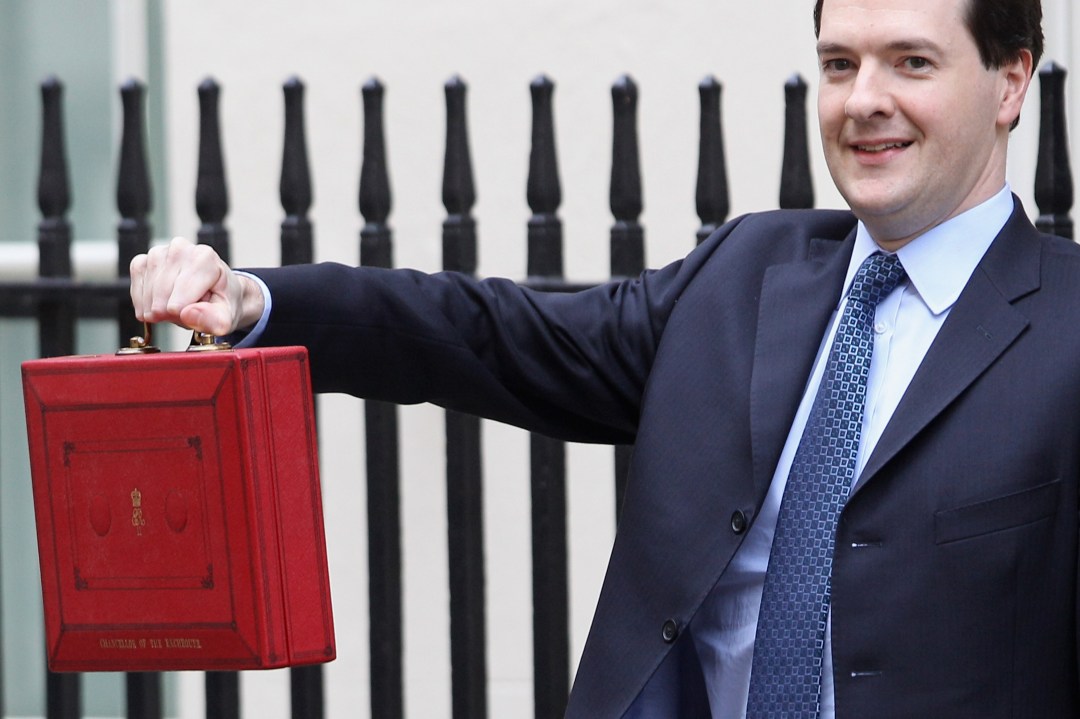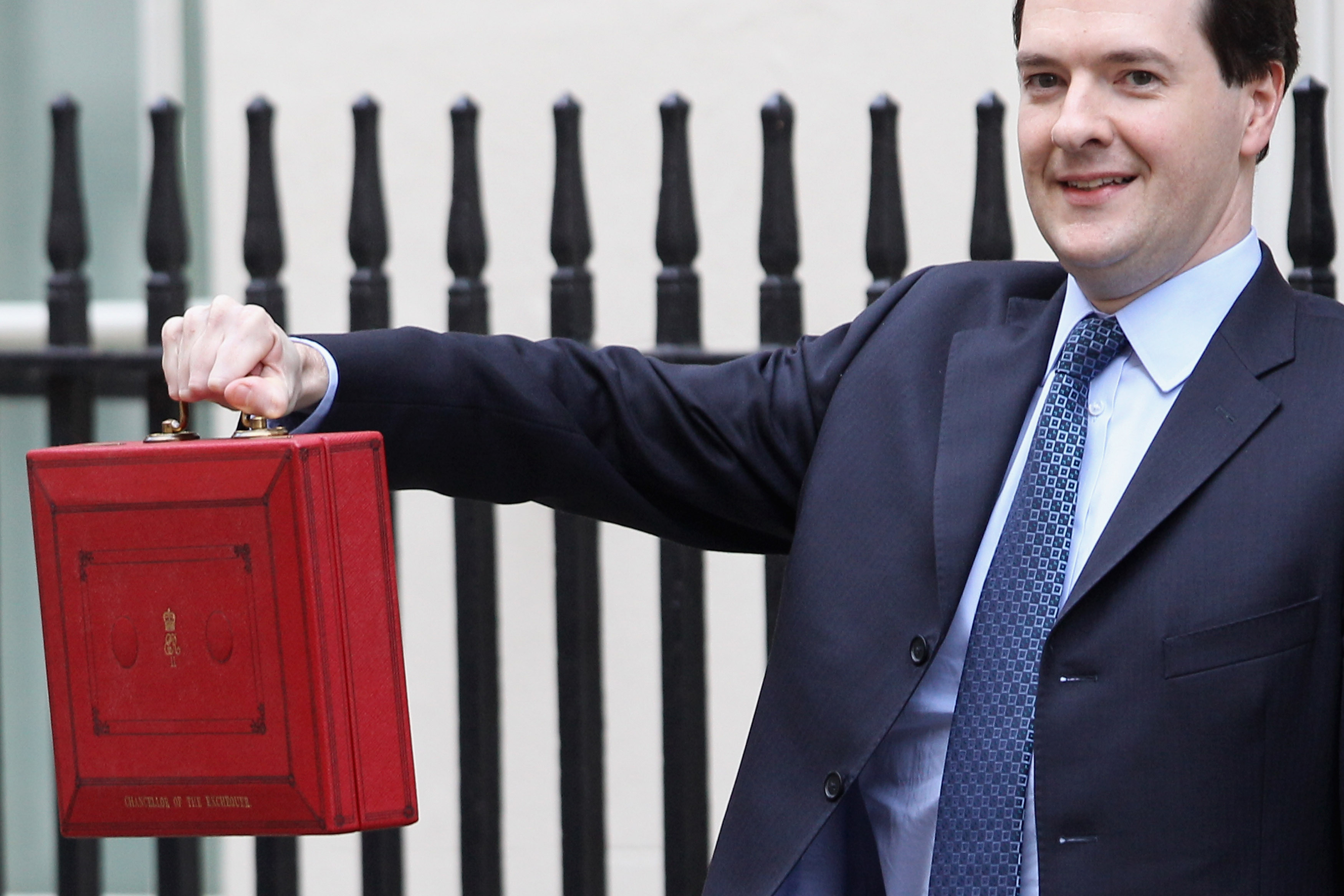How significant was this Budget? On an economic level, not very. There’s no discernible impact on growth: all of the main forecasts have more or less stayed the same since the Autumn Statement. Borrowing is the tiniest bit lower, mainly thanks to a £23 billion accountancy trick with Royal Mail pensions. And even many of the policies announced today will barely rouse the Exchequer’s attention. That cut in the top rate of income tax to 45p? It will mean only £100 million a year less in direct revenues. That stamp duty increase for properties worth over £2 million? It will net only £300 million a year. The overall effect is a fiscally neutral document, as expected. The fuss-to-impact ratio for Budget 2012 is pretty high.
But on a political level, this is the Budget in which George Osborne finally shed that Brownite inheritance of the 50p tax rate. And, crucially, this has been done with a clear supporting document: the HMRC review into what the top rate will raise. This includes the government’s new Laffer curve allowing for various behavioural responses to the top rate (aka, Tax Income Elasticity), something that we haven’t seen in the past. Brown’s Treasury used a TIE figure of 0.35, which conveniently put the revenue-maximising rate at even higher than 50p. Now, the Treasury has struck on a figure of 0.45, which puts the revenue-maximising rate between 45p and 50p. Here’s HMRC’s Laffer curve:

Two questions arise from this. First, why has the Treasury cut the rate to 45p, when — by HMRC’s analysis — a higher rate would raise more money? And the answer to that resides in the
indirect effect of the top rate on other revenues. As the HMRC report puts it:
And the second question is, what if the Treasury has still got its TIE number wrong? And that’s the question that could persist for years to come. Using the Treasury’s new 0.45 TIE value, a further reduction of the top rate to 40p would lose around £700 million a year. But look at the line for the alternative TIE value of 0.55 that HMRC has provided above — that would actually have the revenue-maximising rate at closer to 40p. So which one’s right? It’s very difficult to tell until the effects of the top rate have been measured over years, but it’s worth noting that a recent CEBR report reckoned that raising the TIE level to 0.5 would be a ‘conservative increase,’ and that the optimal top rate (including the effect on indirect revenues) would then actually be 36p. Here’s their chart:‘…the introduction of the 50 per cent additional rate is estimated to have reduced indirect tax receipts by around £220 million per annum. Using the same assumptions and methodology, the reduction of the rate to 45 per cent is estimated to increase indirect tax receipts by around £130 million per annum.’

But the politics of today’s Budget aren’t just about the 50p rate. Osborne went further than expected on Child Benefit; not just raising the threshold at which it cuts out to £50,000, but
also tapering its withdrawal such that no-one faces the ‘cliff edge’ that was threatened before. And then there’s the personal allowance, which will be increased by an extra
£1,100 in April 2013 to £9,205. There’s a strange symbiosis between these two policies — child benefit and the personal allowance — that Osborne didn’t mention in his
speech. More people will be taken into the higher rate tax band, so that the effect of the personal allowance increase is more effectively targeted at the least well-off, but it’s the government’s
intention that many of these higher rate taxpayers will be compensated by the new Child Benefit policy. As the Red Book
explains:
Osborne will probably feel that he’s defused many of his most persistent tax and benefit problems today: 50p, Child Benefit, etc. Although it’s worth keeping an eye on the number of people being taken into the higher rate. They’re still gaining for now, thanks to other policy changes such as the personal allowance. But some Tory MPs will surely baulk at this threshold creep, and where it might lead.‘The basic rate limit will be reduced, from £34,370 to £32,245 in 2013–14, so most higher rate taxpayers will get one quarter of the benefit a typical basic rate taxpayer will receive. This will affect those earning more than £41,450. Rather than pass on the full benefit of the personal allowance to higher rate taxpayers, an equivalent amount of funding will be provided to assist in the fair implementation of Child Benefit reform. The personal allowance increase will provide a real terms gain of £170 to most basic rate taxpayers and £42.50 to most higher rate taxpayers in 2013–14.’







Comments